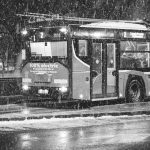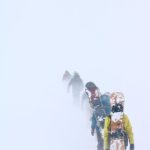Lake effect snow warning can sound scary, especially if you’ve never heard it before. But don’t worry — in this post, we’ll break it down in the easiest way possible. We’ll explore how it happens, who is affected, what you should do, and share real-life stories from people who’ve been through it.
Whether you’re a student, parent, traveler, or just someone curious about winter weather, this guide is for you.
Contents
What Is a Lake Effect Snow Warning?
A lake effect snow warning is an alert from the National Weather Service (NWS) when heavy snowfall is expected due to cold air passing over a large, unfrozen lake. This type of snow usually falls in narrow bands and can drop several inches in just a few hours.
🌨️ Quick Definition:
A lake effect snow warning means dangerous snowfall is likely, usually near lakes like Lake Erie, Lake Ontario, or Lake Michigan.
How Does Lake Effect Snow Happen?
When cold air moves over a warmer lake, the lake adds heat and moisture to the air. That warm, moist air rises and turns into snow clouds. If the wind stays steady, those clouds form a narrow snow band that drops heavy snow downwind of the lake.
✅ Key Ingredients:
- Cold Arctic air
- Warm lake water
- Steady winds
Let’s see this in a simple table:
| Element | Role in Lake Effect Snow |
|---|
| Cold Air | Moves over the lake and collects moisture |
| Warm Lake Water | Adds heat and water vapor to the air |
| Steady Wind | Pushes the snow clouds in one direction |
Where Does It Happen the Most?
Lake effect snow mostly hits areas near the Great Lakes in the U.S. and Canada. These areas are called “snow belts.” Here are a few examples:
- Buffalo, New York
- Erie, Pennsylvania
- Cleveland, Ohio
- South Bend, Indiana
- Toronto, Canada
Real-Life Example of a Lake Effect Snow Warning
Let’s look at a real event:
In November 2022, Buffalo, New York received over 77 inches of snow in just five days due to lake effect snow. Roads shut down, people got stuck in cars, and schools closed. Some even had to shovel their roofs to stop them from collapsing.
Despite the trouble, people helped one another — neighbors shared food, checked on the elderly, and made sure pets were safe.
Why a Lake Effect Snow Warning Matters
When this warning is issued, you should take it seriously. It means:
- Roads may become dangerous
- Visibility can drop to near zero
- Power outages may happen
- Travel could be impossible
So, staying home might save your life.
How to Prepare for a Lake Effect Snow Warning
🧊 Emergency Kit Checklist:
- Flashlight with extra batteries
- Warm blankets and clothes
- Bottled water and non-perishable food
- Phone charger and power bank
- Shovel and road salt
🏠 At Home:
- Keep your heat on
- Close curtains to hold in warmth
- Charge all devices
- Stay off the roads unless needed
🚗 If Driving:
- Don’t drive if you don’t have to
- Keep a car emergency kit
- Tell someone your route
- Drive slowly and keep headlights on
What’s the Difference Between Watch, Advisory, and Warning?
| Alert Type | What It Means |
|---|---|
| Watch | Conditions are right for snow to happen soon |
| Advisory | Snowfall will cause problems but isn’t too dangerous |
| Warning | Serious snow is happening or about to start |
Remember:
Warning = Take action now.
Future of Lake Effect Snow: What’s Changing?
With climate change, lake effect snow is changing too. As lakes stay warmer longer, snow events may increase in early winter. But later, as global temperatures rise, the lakes might freeze less — reducing snow overall.
Still, experts say snowstorms could become more intense, even if fewer in number.
🧠 Learn more about it from the National Weather Service and NOAA.
Case Study: South Bend, Indiana
In January 2014, South Bend was hit with a major lake effect snowstorm. It dropped over 40 inches of snow in two days. Schools were closed for a week, and the city declared a state of emergency.
People used snowmobiles to deliver food and medicine. The community even organized warming shelters in churches and libraries.

FAQs About Lake Effect Snow Warning
❄️ What should I do during a lake effect snow warning?
Stay indoors, stock up on essentials, and avoid travel. Charge your devices and check on neighbors.
❄️ How long does lake effect snow last?
It can last from a few hours to several days, depending on weather conditions.
❄️ Can lake effect snow be predicted?
Yes, weather experts use radar and models to predict it, but the snow bands can shift suddenly.
❄️ Is lake effect snow heavier than regular snow?
Yes, it’s often heavier and wetter, which makes it harder to shovel and more likely to cause roof damage.
❄️ Does lake effect snow happen only in the U.S.?
No. It also happens in Canada and parts of Japan near large lakes.
Practical Uses: How Communities Prepare
Cities like Buffalo and Erie use the warning to prepare:
- Plow trucks are ready to roll
- Schools and roads may close early
- Local radio and news stations update the public every hour
Even businesses plan for these events by allowing remote work, stocking up on salt, and checking building safety.
Conclusion
A lake effect snow warning isn’t just a winter weather message — it’s a call to stay alert and stay safe. From heavy snowfalls to slippery roads and power outages, this kind of snowstorm can be dangerous.
But with preparation, knowledge, and a little community teamwork, you can get through it safely.
Whether you’re in Buffalo, South Bend, or anywhere near a big lake, keep your eyes on the forecast, stock your emergency kit, and don’t take chances.
🔗 Helpful External Links
- National Weather Service – Lake Effect Snow
- NOAA – Snow and Ice Reports
- Winter Safety Tips from Red Cross
- Lake Effect Snow Explained – YouTube Video (Simple)







